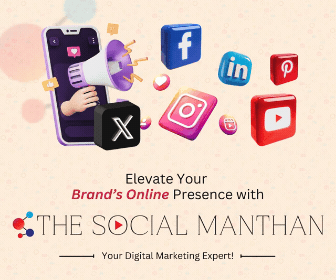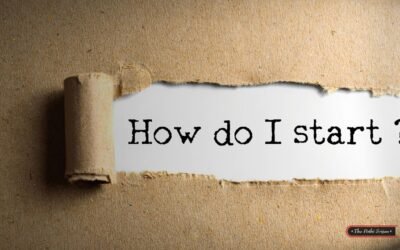It’s exciting to finally have your book ready for the world! Now comes the fun part—sharing it with readers both online and offline. In this post, I’ll walk you through the various strategies I’ve found effective for distributing my own work. Whether you’re looking to reach a global audience via digital platforms or connect locally through bookstores and events, I’ll provide some helpful tips to get your book into the hands of eager readers. Let’s dive in!
Key Takeaways:
- Identify your target audience and choose the right distribution channels, both online (e.g., Amazon, social media, and your own website) and offline (e.g., local bookstores, libraries, and events).
- Build a marketing strategy that includes engagement with readers through social media, book signings, and local promotions to boost visibility and sales.
- Utilize print-on-demand services and e-book platforms to streamline distribution and reduce upfront costs, making your book accessible to a wider audience.
Crafting Your Digital Presence
Establishing a compelling digital presence is crucial for connecting with readers and promoting your book effectively. By leveraging tailored platforms, I can present my unique author brand while engaging with my audience in meaningful ways. This digital footprint can help readers find my work, learn more about me, and stay updated on future releases and events.
Building an Author Website That Converts
A well-designed author website serves as the cornerstone of your online presence. It should feature a clean layout, engaging visuals, and easy navigation that showcases your books and personality. Including a dedicated blog can help attract visitors through valuable content, while clear calls-to-action, such as newsletter sign-ups or links to purchase my books, can drive conversions. Investing in SEO optimization can further amplify my reach, making it easier for potential readers to discover my work.
Leveraging Social Media: Tips for Engagement
Social media can be a powerful ally in building relationships with readers and promoting my book. Sharing behind-the-scenes glimpses of my writing process, engaging in discussions, and responding to comments creates a sense of community. Additionally, hosting giveaways, collaborating with other authors, or participating in reader challenges can amplify my reach and generate excitement. Focusing on authenticity in my interactions will help me create a loyal following that passionately supports my work.
- Utilize platforms like Instagram, Twitter, and Facebook to connect with readers.
- Post diverse content, from random musings to writing tips and book recommendations.
- Engage actively by responding to messages and comments promptly.
- Thou shall experiment with various formats like live videos or stories to find what resonates.
To truly engage readers on social media, I focus on authenticity and consistency. Sharing snippets of my day-to-day life, insights into my writing journey, and even personal anecdotes fosters a connection that goes beyond promoting my book. I aim for transparency by showing my struggles and victories, making it easy for readers to connect with me. Through regular interaction and sincere dialogue, I create a vibrant community around my writing, where readers feel valued and involved.
- Consider running polls or asking for feedback on story elements to involve readers in the creative process.
- Collaborate with like-minded authors to expand your network and find new audiences.
- Adjust your posting schedule based on audience engagement metrics for optimal visibility.
- Thou will explore paid promotions to reach targeted demographics that align with my readers.
Mastering Online Distribution Channels
Having a firm grasp of online distribution channels empowers you to reach your audience effectively and maximize sales. I found that exploring diverse platforms can help you tailor your approach and connect with readers in a more meaningful way. From mastering Amazon’s vast ecosystem to discovering alternative sites, there’s plenty to consider. By choosing the right channels, I’ve seen firsthand how a strategic distribution plan can elevate a book’s visibility and engagement.
Navigating Amazon: The Self-Publishing Powerhouse
Amazon is the largest online marketplace for books, offering self-publishers a streamlined platform through Kindle Direct Publishing (KDP). With KDP, I can publish both eBooks and paperbacks, reaching millions of potential readers immediately. The tools available for marketing, such as Kindle Unlimited and Amazon Advertising, provide vital resources that can significantly increase exposure if utilized effectively. I quickly learned how Amazon’s customer reviews and rankings can be leveraged to elevate my book’s success.
Alternatives to Amazon: Exploring Other Platforms
While Amazon is a major player, several alternative platforms can help broaden your reach. Options like Barnes & Noble Press, Kobo, or Apple Books cater to different reader demographics and allow for greater diversification in sales strategies. I explored platforms like Draft2Digital and Smashwords, which distribute to multiple retailers simultaneously, making it easier to ensure my book is available to various audiences.
Consider the unique advantages these alternatives offer. Barnes & Noble Press, for instance, provides print-on-demand services and direct access to its brick-and-mortar stores, while Kobo focuses on international markets, making it easier to tap into foreign readership. In my experience, using a combination of these platforms not only diversified my sales avenues but also minimized reliance on a single source, which in turn protected my overall revenue stream. Embracing these alternatives can significantly expand your book’s footprint in the market.
Connecting with Readers Through Offline Strategies
Creating genuine connections with your readers in person can significantly enhance your book’s visibility and foster a loyal fanbase. Engaging with audiences face-to-face allows you to create memorable experiences, strengthen your storytelling, and establish your personal brand. Crafting a strategy that incorporates offline outreach—tapping into community-oriented events and local venues—can lead to valuable interactions that online methods might not achieve. This multifaceted approach not only gets your book into the hands of readers but also opens up opportunities for further engagement.
The Power of Book Signings and Local Events
Participating in book signings and local events is an excellent way to meet readers and showcase your work. These gatherings create an intimate setting where you can share your journey, sign copies, and engage in conversations that breathe life into your story. Setting up a booth at a local fair or attending literary festivals provides exposure, and the personal interaction can often turn casual attendees into passionate advocates for your book.
Building Relationships with Bookstores and Libraries
Establishing a collaborative relationship with local bookstores and libraries can amplify your reach significantly. By connecting with these community hubs, I can arrange book readings, signings, or even workshops that draw in interested readers. Bookstores appreciate authors who help promote their work, while libraries often seek local talent to engage their community, making it a win-win situation. I strive to ensure that I present my book in a way that appeals to both venues, showcasing its relevance and potential appeal to their respective audiences.
To deepen connections, consider offering to lead discussions or workshops related to your book’s themes. Libraries frequently look for unique events to engage their patrons, and a reading followed by a Q&A can spark interest. Moreover, you could propose partnering with local bookstores for joint events that highlight multiple authors, thus drawing larger crowds. Developing a presence in these spaces not only promotes your current book but nurtures ongoing relationships that might benefit my future projects. The more invested I am in those environments, the more they’ll support my journey as an author.
Tactics for Effective Marketing Campaigns
Developing a marketing campaign that resonates with readers involves a mix of creativity and strategy. I focus on identifying my target audience and tailoring my messages to their preferences. Engaging content, captivating visuals, and strategic timing all play a role in creating campaigns that not only promote my book but also engage my audience. Utilizing various channels such as social media, email newsletters, and collaborations can amplify my reach and encourage readers to connect with my work.
Email Marketing: Your Direct Line to Readers
Email marketing serves as a powerful tool for connecting directly with my readers. By building a subscriber list, I can share exclusive content, updates, and promotions related to my book. Personalized messages foster a sense of community, making readers feel valued. With engaging newsletters, I keep them informed, excited, and eager for what’s next in my writing journey.
Collaborating with Influencers and Bloggers
Working alongside influencers and bloggers can significantly expand my book’s visibility. Their established audience often looks to them for recommendations, opening the door for new readers. By sending out review copies and partnering for promotional events, I tap into their follower base, driving interest in my book. This strategy not only enhances credibility but also cultivates a network of supporters that can propel my marketing efforts further.
In the book marketing world, collaboration is key. When I reach out to influencers whose interests align with my genre, the opportunities multiply. For instance, a book blogger focusing on mystery novels might connect me with readers who have similar tastes. Engaging them in discussions or guest posts on their platforms can lead to authentic recommendations, which are invaluable. A single shout-out from a well-regarded influencer can result in increased sales and a significantly larger readership. By fostering these relationships, I can create lasting partnerships that benefit both parties.
Measuring Success and Adapting Your Strategy
Tracking your book’s performance is vital for refining your promotional efforts and maximizing your reach. By assessing both sales figures and reader feedback, you can better understand what’s working and where adjustments may be necessary. This insight allows you to pivot your strategy effectively to meet your audience’s needs and preferences.
Analyzing Sales Data and Reader Feedback
Looking at sales data provides a clear picture of your book’s performance across various platforms. Combine this with reader reviews and comments, and you’ll gain valuable perspectives that can help you identify trends or patterns. Be attuned to both positive feedback and constructive criticism, as each insight can lead to enhancements in your marketing approach.
Adjusting Your Approach for Maximum Impact
Fine-tuning your strategy can amplify your book’s visibility and boost sales. By leveraging insights gathered from sales data and reader feedback, I routinely experiment with different marketing channels and tactics. For instance, if I notice strong sales in a specific region, I might focus on targeted local promotions. Alternatively, if readers highlight particular aspects of my book they enjoyed, I incorporate those elements into my marketing messages. This iterative process ensures I’m always aligned with my audience’s needs and actively engaged in promoting my work.
By actively engaging with your audience and being receptive to their input, you’re setting the stage for ongoing success. For instance, if you gather feedback indicating that readers want more behind-the-scenes content, consider offering exclusive insights or updates through newsletters or social media. Additionally, analyzing trends in sales patterns lets you identify potential marketing opportunities, like a seasonal campaign or partnering with related authors. This adaptability ensures your promotional efforts remain relevant and impactful, ultimately leading to greater success for your book.
Summing up
Considering all points, distributing your book online and offline can be an exciting journey that reaches a wider audience. I encourage you to explore various platforms, from social media to local bookstores, to find what works best for you. Engaging with readers through events or author websites can also enhance your visibility. By combining both online and offline strategies, you can create a well-rounded presence that maximizes your book’s potential. Dive in, be creative, and enjoy the process of sharing your story with the world!
Q: What are the steps to distribute my book online?
A: To distribute your book online, start by selecting the right platforms. Popular options include Amazon Kindle Direct Publishing, Smashwords, and IngramSpark. Create an account on your chosen platform and follow their guidelines for uploading your manuscript and cover design. Set your pricing and distribution options, ensuring that your book is available in various formats, such as eBook and print. Promote your book through social media, email newsletters, and author websites. Engaging with readers and utilizing online marketing strategies can significantly increase visibility and sales.
Q: How can I effectively promote my book offline?
A: Offline promotion can be highly effective for reaching local audiences. Start by organizing book readings or signings at local bookstores, libraries, and community centers. Networking with local book clubs and arranging to speak at events can also create buzz. Consider distributing flyers and business cards in local coffee shops or community bulletin boards. Additionally, you can collaborate with local influencers or media to get interviews or features that highlight your book. Creating a strong local presence can help build readership within your community.
Q: What are the benefits of using both online and offline distribution methods?
A: Utilizing both online and offline distribution methods allows you to reach a wider audience. Online methods provide the advantage of global access, enabling sales across various platforms without geographical limitations. On the other hand, offline methods encourage personal connections and can lead to more significant engagement with your community. Combining these approaches maximizes exposure, catering to different reader preferences, and ultimately increases your chances of successful book sales. A multi-faceted strategy helps ensure you connect with readers in diverse ways and can yield the best results.








